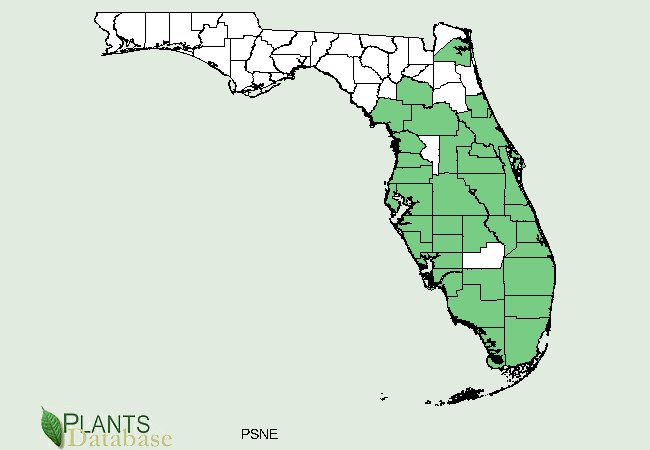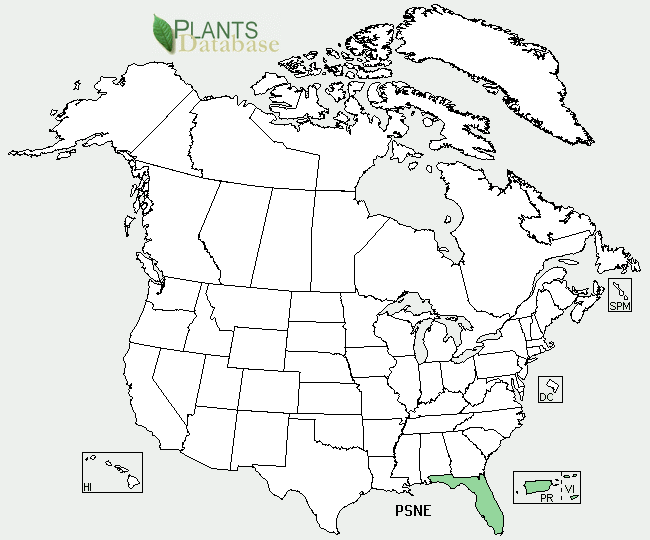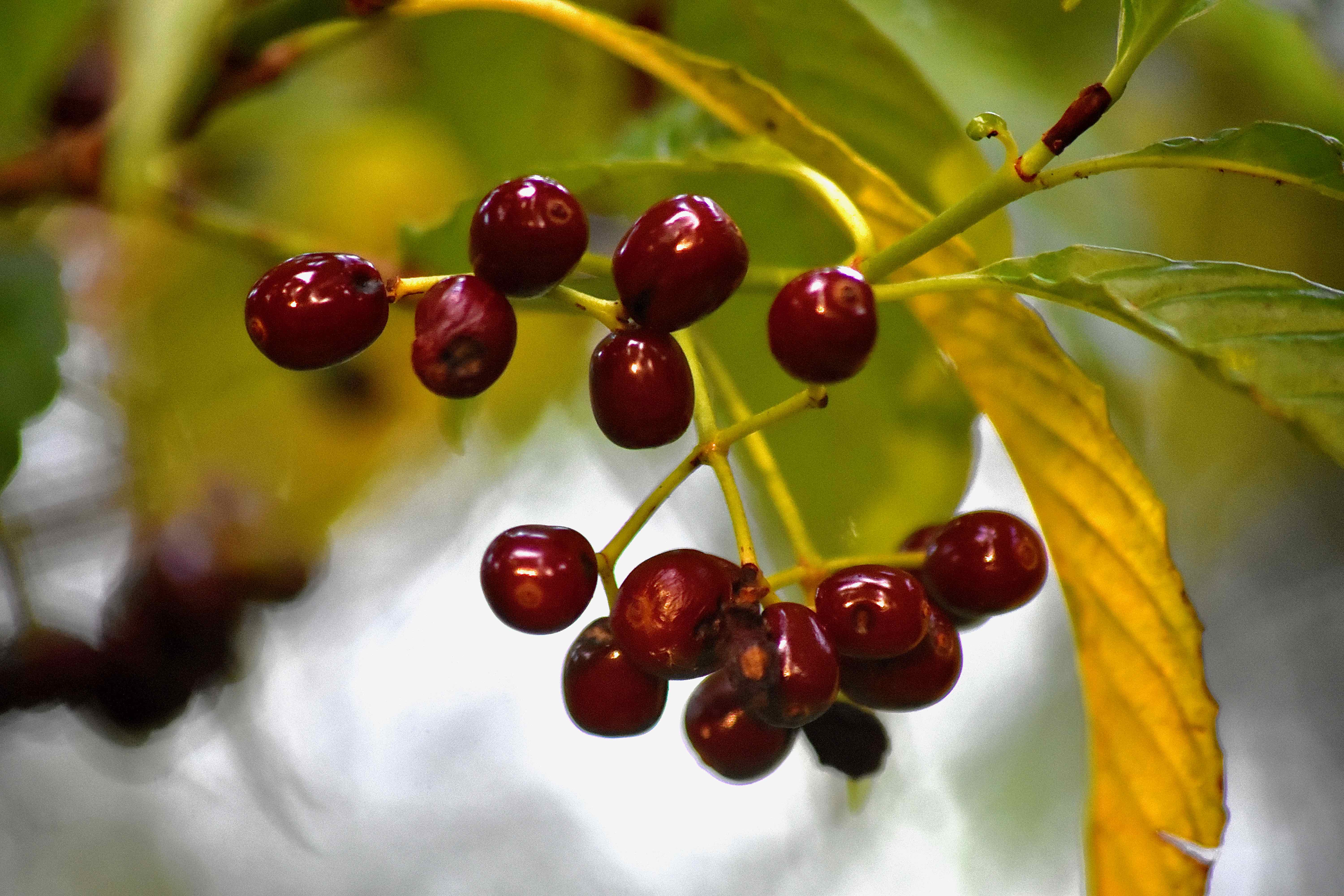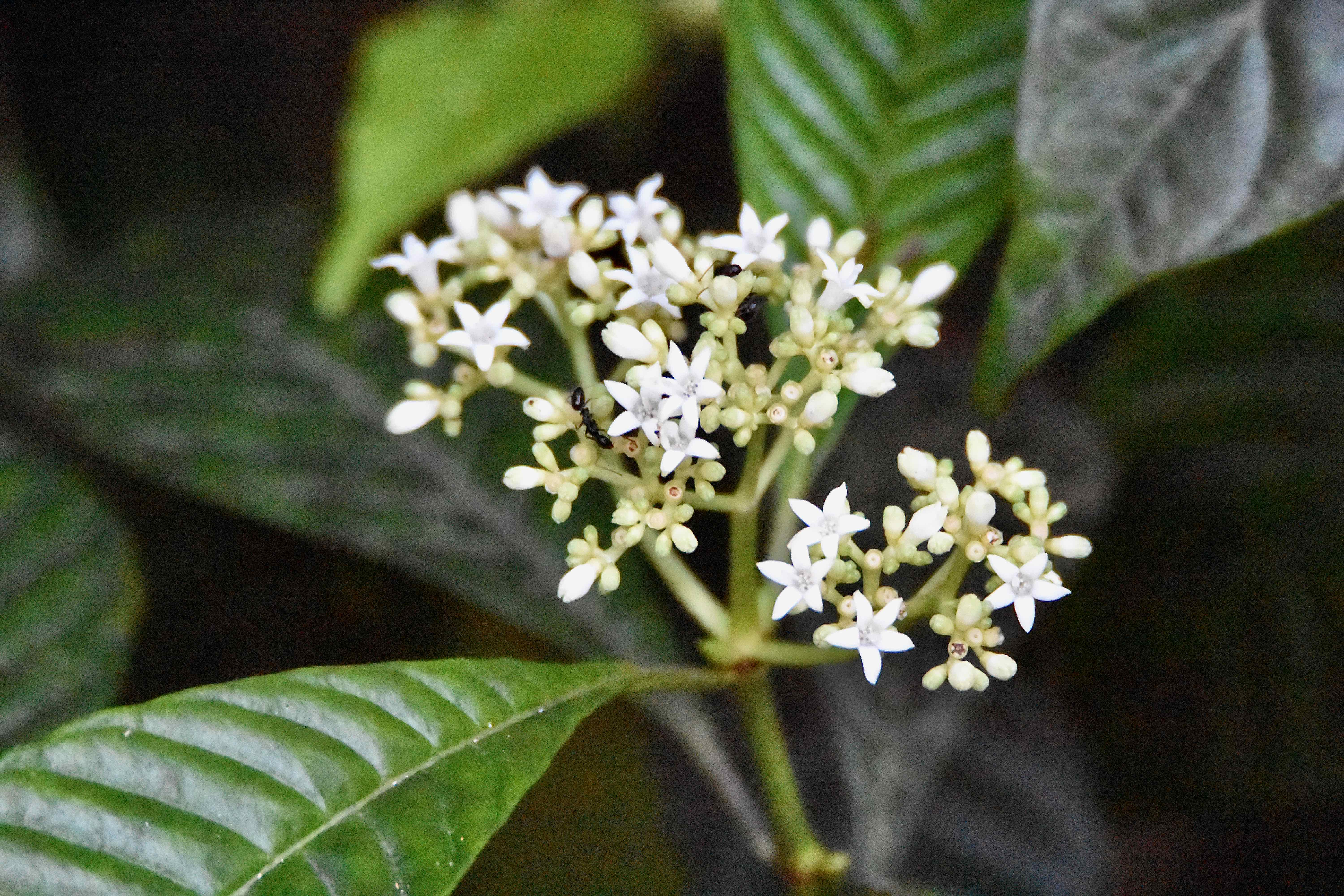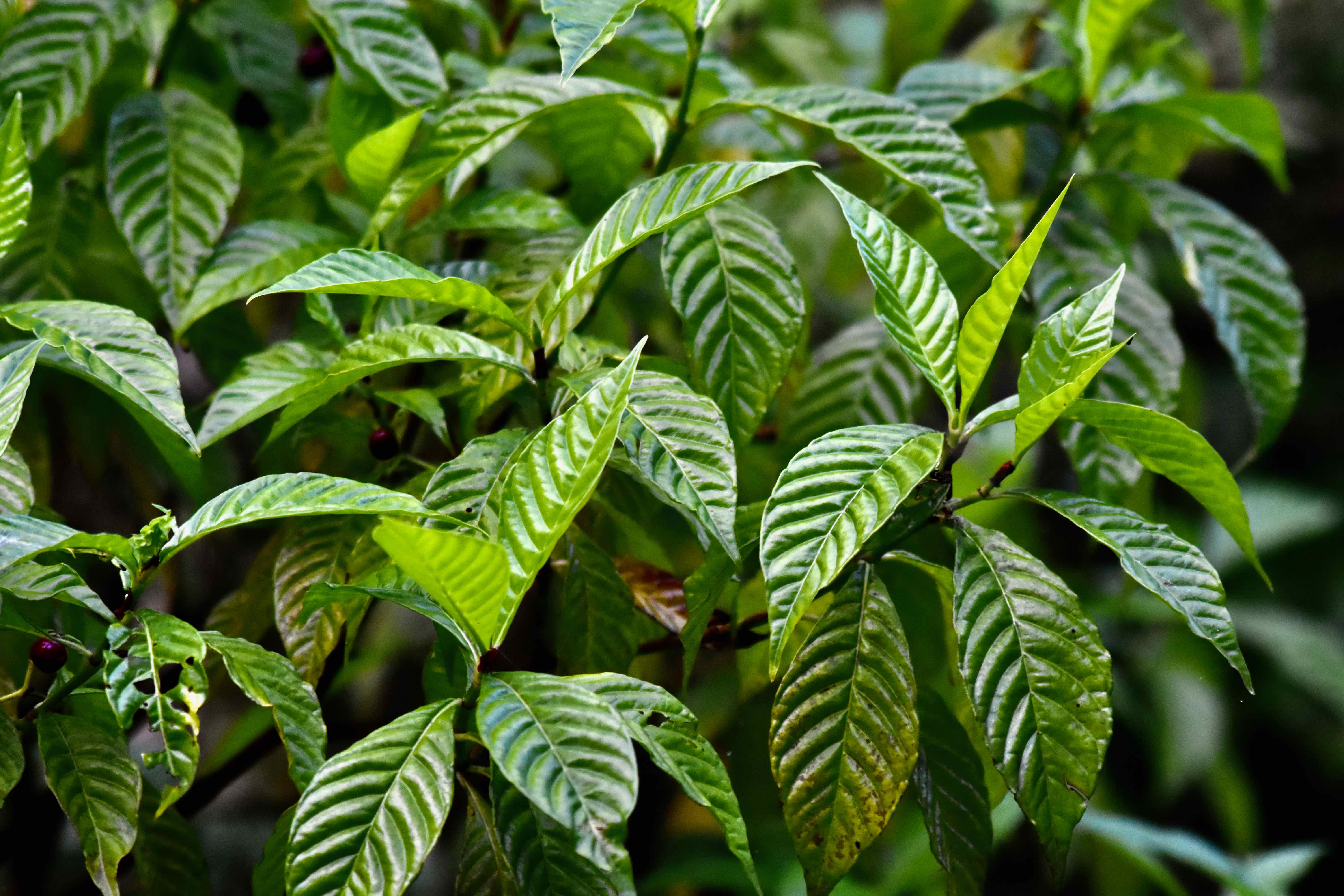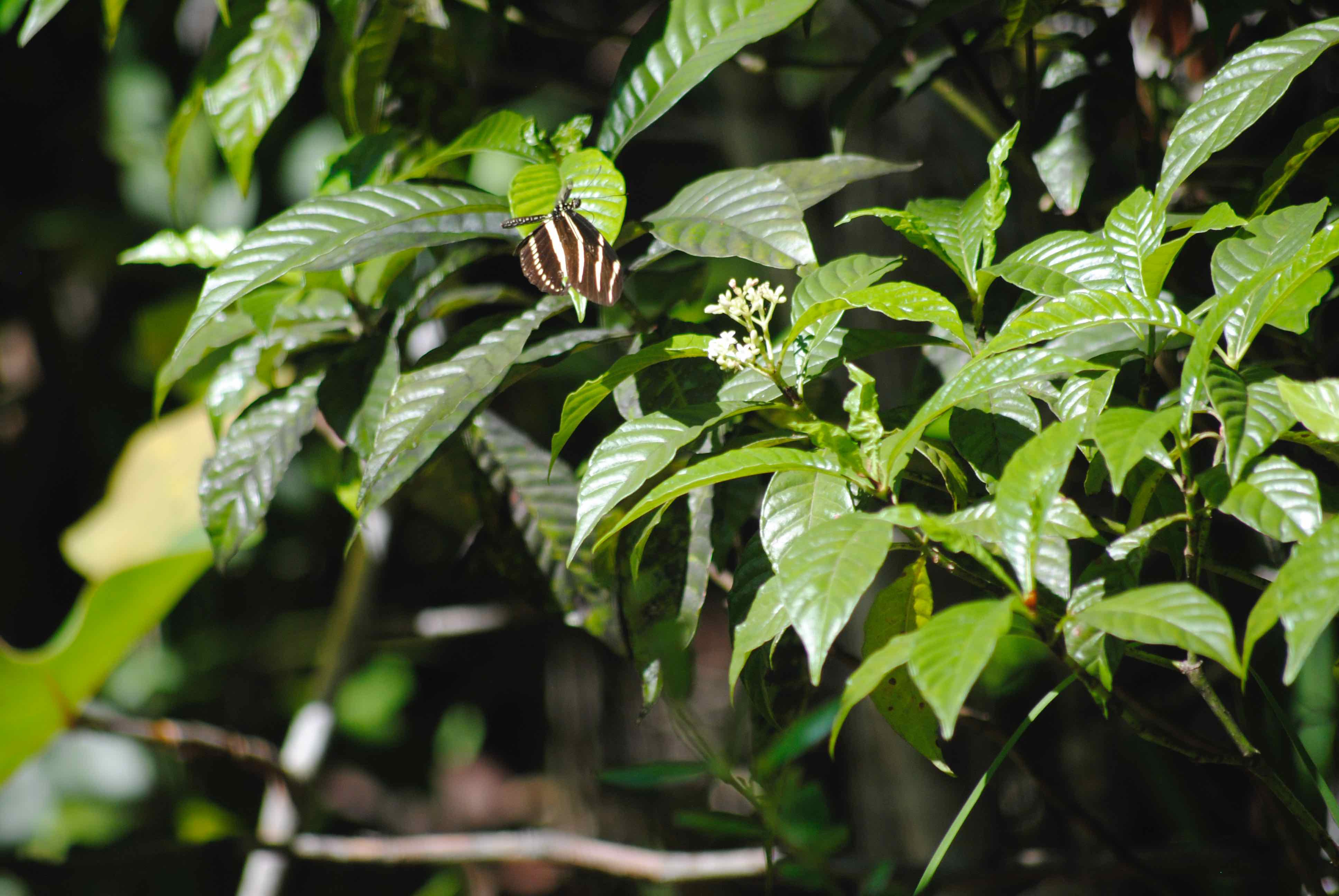
Shiny-leaved wild coffee, photographed at Oleta River State Park, North Miami, Miami-Dade County, in May 2014.
The first question this plant brings to mind is whether you'd want to make your morning brew from the berries of wild coffee? Quick answer: no.
Shiny-leaved wild coffee, Psychotria nervosa, is in the same plant family as the stuff you find at Starbucks, but so are at least 5,999 other plants. There are something like 103 species of coffee worldwide, but only three are used to make a cup of Joe. This is not one of the three. Oh and that scientific name isn't as provocative as it might seem, but we'll get into that in a bit.
You can indeed make a beverage from wild coffee berries but it A) won't taste good, B) won't resemble coffee and C) will lack any caffeine kick. Might even give you a headache. But aside from its unpleasant taste, wild coffee has more than its share of positives. But first, a few wild coffee basics.
Shiny-leaved wild coffee is one of three wild coffee species native to Florida and the most common. For simplicty sake, we'll call it wild coffee. It's found throughout the Peninsula from Duval County south to the Keys. It is found only in Florida among the 50 states. Its native range extends throughout the Caribbean, Mexico, Central America and the northern shoulders of South America.
Wild coffee is a shrub that grows generally four to six feet tall, but we have seen references that it can hit 10 or even 15 feet under the right growing conditions. One commercially available variety stands no more than three feet tall, and is sold under the name, Little Psycho. It is a common and easily identifable understory plant particularly in coastal areas, taking light to full shade.
The leaves of wild coffee are the source for the secord part of its scientific name: nervosa refers to the prominent veining in the leaves. The other prominent feature is that they're shiny. Wild coffee leaves are simple, arranged opposite each other along the stem, ellipitical in shape and about four to eight inches long. The plant flowers year round, with spring into summer being the peak season. The blooms are small, white and form in loose clusters. Wild coffee has a limited tolerance for cold. It is a perennial.
The berries — technically they are drupes — might not be any good for making coffee, but a long list of birds find them tasty, as do other animals. The flowers attract hungry butterflies, including the incredibly rare atala. The shrub as a whole provide cover for a host of animals, including birds and butterflies. The shiny leaves and the red berries make wild coffee popular as a landscaping plant. It's used as a accent, as a hedge and in buffers. It likes moist soils, but it is moderately drought tolerant.
Psychotria comes from ancient Greek, meaning to endow with life, a reference to the medical properties some of the genus members possess — and there are a lot of members. In fact, about 1,500, but scientists have studied only a handful for their medical potential; some have been found to have antibiotic, antiviral and antiparasitic compounds. Wild coffee's potential? Unclear. Some say it contains a hallucinogenic, dimethyltryptamine.
Other wild coffee species include: short-leaved wild coffee, Psychotria tenuifolia, dotted wild coffee, Psychotria punctata, and Bahama wild coffee, Psychotria legustrifolia. Three of the four are Florida natives; the one exception is dotted wild coffee, which is of African origin and brought here as an ornamental. Short-leaved wild coffee is also known as dull-leaved wild coffee. Bahama wild coffee is state-listed as endangered.
We should note that the coffee plants used to make your morning cup are known botanically either as Coffea arabica (more than likely) or Coffea canephora — aka robusta (used to make instant coffee and some coffee blends, particularly espresso). You'll note that they're not even in the same genus as our guy.
Other names for shiny-leaved wild coffee include Seminole balsmo, Bahamian wild coffee, shiny-leafed wild coffee, cafe morron, and wood balsam. It is a member of Rubiaceae, a huge family of plants that includes all coffees and about a zillion other plants (we've seen sources that put the number as low as 6,000 and as high as nearly 18,000).
Oleta River State Park
Click on photo for larger image
U.S. Department of Agriculture Distribution Maps
